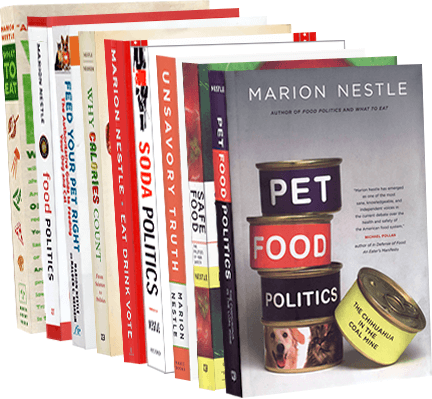The 2010 Dietary Guidelines: some hints at what they might say
By congressional fiat, federal agencies must revise the Dietary Guidelines every five years. This is one of those years. The 2010 Dietary Guidelines Advisory Committee has been meeting for a couple of years and is now nearly done.
Some unnamed person from the American Society of Nutrition must be attending meetings. The society’s Health and Nutrition Policy Newsletter (April 22) provides a report.
From the sound of it, this committee is doing some tough thinking about how to deal with “overarching issues” that affect dietary advice:
- The high prevalence of overweight and obesity among all Americans
- The need to focus recommendations on added sugar, fats, refined carbohydrates, and sodium (rather than the obscure concept of “discretionary calories” used in the 2005 guidelines)
- The benefits of shifting to plant-based, rather than meat-based, diets
- The need to help individuals achieve physical activity guidelines
- The need to change the food environment to help individuals meet the Dietary Guidelines
Applause, please, for this last one. It recognizes that individuals can’t do it alone.
The committee’s key findings and recommendations:
- Vegetable protein and soy protein: little evidence for unique health benefits, but there are benefits, such as added dietary fiber intake, from diets high in vegetable and soy proteins.
- Carbohydrates: a consistent relationship between soft drink intake and weight gain. Overweight and obese children should reduce overall energy intake, especially from added sugars (and especially in the form of soft drinks and sugar-sweetened beverages).
- Fats: mono and polyunsaturated fats, when replacing saturated fats, decrease the risks of heart disease and Type 2 diabetes in healthy adults. No benefit from increased intakes of omega-3 fatty acids above 250-300 mg a day. Adults should eat two servings of fish per week to obtain omega 3 fatty acids.
- Sodium: decrease sodium intake to 2,300 mg sodium per 2,000 calorie diet to lower blood pressure in adults and children. Since 70 percent of the population is hypertensive, the goal for most individuals should be 1,500 mg per 2,000 calorie diet.
- Potassium: because higher intakes of potassium are associated with lower blood pressure, adults should increase intake to 4,700 mg daily.
Translation: more fruits and vegetables, fewer processed foods, and changes in the food environment to make it easier for everyone to follow this advice.
Next steps: the committee is supposed to complete its report by May 12 and send it to USDA and DHHS. The agencies post the report in June for public comment. Then, agency staff write the guidelines and publish them by the end of the year.
Historical note: prior to 2005, the committee wrote the guidelines. I was on the 1995 committee and we drafted guidelines that the agencies hardly touched (except to tinker with the alcohol guideline, as I discussed in Food Politics and What to Eat). The guidelines have always been subject to political pressures, but with the agencies writing them, expect even more.
Let’s hope the committee’s sensible ideas will survive the process. I will be paying close attention to how the 2010 guidelines progress. Stay tuned.


